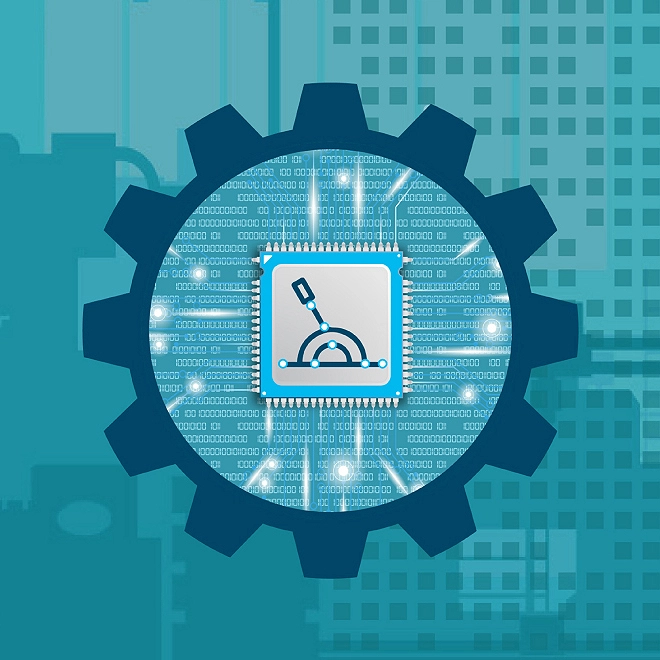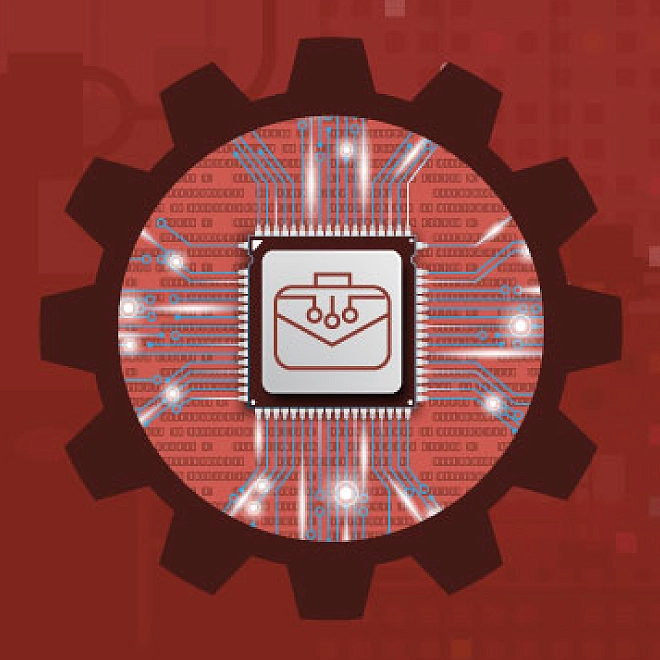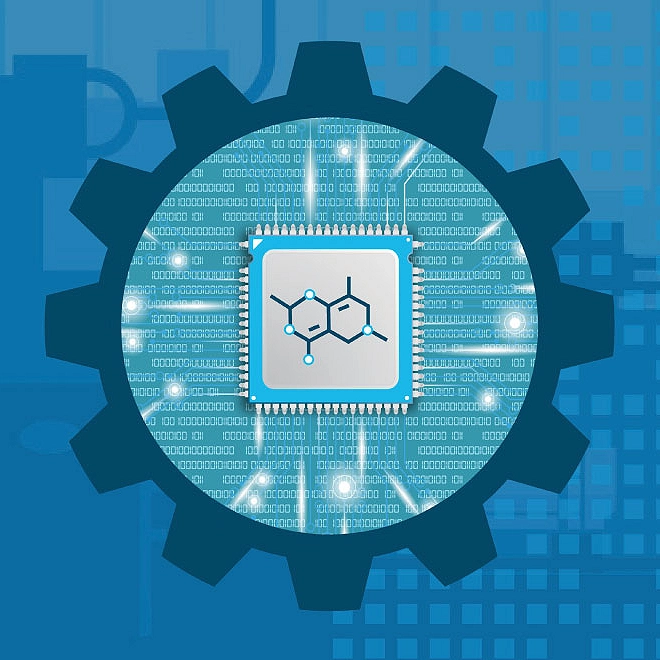Designing the modern digital function
How a CDO can help orchestrate the digital transformation journey
To make digital industrial transformation a reality, a company needs both a nerve center and a dedicated digital function. Creating an operational structure is key, and the 15th article in our series suggests how leaders can make it happen.
Introduction
THE Fourth Industrial Revolution has changed the landscape of business operations.1 Business leaders around the world have come to recognize the power of embracing digitally enabled ways of working and the competitive edge that Industry 4.0 can impart to their companies’ operations and output. Earlier installments in our series introduced the digital transformation framework2 and the transformation nerve center (TNC);3 this article builds upon this foundation and provides a deeper look at key attributes that, when activated, can help smooth any organization’s digital transformation.
Learn more
Explore the Digital industrial transformation collection
Learn about Deloitte's services
Go straight to smart. Get the Deloitte Insights app
The journey to digital maturity is a challenging one. In a recent survey, 85% of CEOs confirmed that being a digital business is important for success, but only 40% agreed that they possess the vision necessary to lead a digital business.4 Another study found that most companies are ill-positioned to harness digital technologies’ long-term potential and therefore limit their scope to near-term goals.5
Leaders who want to take full advantage of Industry 4.0 possibilities should look to orchestrate the digital transformation journey and create an operational structure that drives toward digital goals in a consistent, cohesive, and integrated manner. A TNC makes it possible by owning planning and delivery of large, enterprisewide transformations. In this article, we outline an approach to set up a dedicated digital function that works in concert with the TNC to establish front- and back-office digital capabilities to drive the transformation and help meet strategic business goals.
Meet the digital leader
In our experience, most successful digital transformations begin at the top, with the organization appointing a chief digital officer (CDO), a senior leader responsible for the organization’s long-term digital vision and the subsequent execution of the transformation efforts. We conducted primary and secondary research across 20 diverse companies that recently underwent a digital transformation and found that, regardless of industry, organizations that appointed empowered CDOs—backing them with strong mandates and executive support—exhibited dramatic operational improvement.
Our research suggests that most CDOs—who may or may not retain their position and responsibilities after a transformation effort winds down—fit one of four archetypes (figure 1):
- The disrupter. The CDO has the mandate to transform existing business models and ways of working. The role is characterized by high accountability and high decision efficiency, typically reporting to the CEO.6
- The innovative integrator. The CDO integrates customer sensing and insights with operational capability improvements. While the CDO reports to the CEO, they primarily focus on the highest-priority innovations and may lack full control over all digital execution—for instance, product R&D.
- The market-minded maven. The CDO drives new digital solutions for customer-facing channels and routes to market. The role focuses on digital initiatives that affect customer growth, which may result in them being disconnected from other business units. The CDO is accountable for end-to-end customer experience and typically reports to the CMO or CRO.
- The technology integrator. The CDO is technology-centric and uses digital innovation to accelerate change in the organization. The role is focused on single-outcome initiatives, in the form of stable workplans that result in optimized operations. The flip side of this approach is that the initiatives undertaken may not adapt quickly enough with changing business needs, and key components of business strategy may get overlooked. The CDO typically reports to the CIO or CTO.

While each of the CDOs we studied structured different initiatives to meet their organization’s goal, the one common thread among them was the formation of a discrete set of capabilities under their purview: the digital function.
The digital function
As mentioned earlier, the TNC sits at the broader C-suite level and drives fundamental business transformations; underneath the TNC lies the digital function. The digital function is the enabling force that drives strategy and owns execution of the road map to enable digital capabilities, with the overall objective of realizing the CDO’s vision and goals (figure 2). In large business transformations, the digital function acts as a partner to the TNC. In the absence of a large, TNC-led transformation, the digital function helps to enable new digital capabilities across functions.

The most successful transformation efforts tend to integrate five key elements: digital strategy, digital investment, digital operations, customer insights, and digital DNA.
Digital strategy
The CDO’s foremost goal is to align with the executive committee’s directives and define a digital North Star that is well communicated and understood across the enterprise.7 Once a clear and unambiguous digital vision is in place, leaders across the enterprise can work to identify and prioritize digital initiatives based on an established set of criteria.
Setting the strategy and defining the road map for the digital transformation is the first step in the path that CDOs need to chart. While the digital strategy defines the broad business goals to be realized, the road map outlines how the company’s existing technical architecture, processes, and planned initiatives need to be revamped—and which moments within the customer experience journey need to be fundamentally transformed. Our research showed the digital function playing a key role in setting the strategy, validating it with key stakeholders, and translating it into a road map.
In road map development, the digital function is responsible for gathering the appropriate inputs and conducting analysis (figure 3) to orient the transformation and create an executive-level view of digital transformation efforts.

Road map inputs can be categorized as outside-in or inside-out. Inputs that are outside-in are information gathered about the company from outside sources, such as customer feedback from interviews and/or surveys. Inputs that are inside-out are information gathered about the company from within, such as internal assessments of business capabilities.
The digital function can then conduct analysis that identifies customer pain points, gaps in critical business capabilities for digital enablement, and the existing actions (if any) being taken to strengthen one or more of these areas. With this perspective, the digital function can begin to develop a list of new initiatives to undertake that will address these issues, work with leadership to prioritize these activities, and place them onto a road map for execution.
A good example of strategy and road map in action comes from a global cloud-based software provider, which aligned the transformation of its creative cloud business to its digital North Star: customer-centricity. Company leaders wanted to better leverage its customer data to understand customer journeys end-to-end and subsequently structured the company’s entire transformation around customer journey phases. It developed a rigorous data-driven operating model that assigned each customer journey phase specific KPIs and programs. The operating model served as a centralized, democratized dashboard that acted as a singular source of truth for teams across the business.8 Teams then leveraged these insights to develop road maps for prioritization and measurement of the new initiatives. Leading with the customer journey helped align the entire business to customer needs. The model drove the business toward strategic objectives with informed insights, minimizing decisions based on gut or intuition that don’t align directly to customer-based KPIs.9
Digital investment
Development of new digital capabilities requires investment and thus necessitates a well-defined digital investment model to help allocate funding. While the TNC drives certain investments from an execution perspective, the digital function oversees the investment governance model specifically for digital investments. Of the several investment governance mechanisms we observed, those that were most effective shared these traits: Funding was centralized, owned by the digital function, and substantive enough to create influence across the organization.
The digital function needs to determine what investment model it will employ to fund initiatives. The details of each model will vary by organization, of course, but the model should be process-driven, should prioritize and invest in only the most promising initiatives, and should be flexible enough to evolve over time. A three-step investment and prioritization model may be an appropriate starting point for many organizations:
- Filter. Digital transformation initiative requests are collected and filtered through a centralized intake channel, with those lacking qualifications for investment—for instance, unaligned with the digital strategy—rerouted to other funding sources.
- Score. Every digital transformation initiative is evaluated on predetermined business-value dimensions and ease-of-execution dimensions, including cost estimates. Scores are weighted, based on predefined weights.
- Prioritize. Digital transformation initiatives are mapped onto a 2X2 matrix (figure 4) to determine priority level and ranking. An executive view is generated and presented for review during investment meetings, with approved initiatives added to the road map for execution.

Digital operations
Each of the digital function’s key elements is closely related, and digital operations is the backbone that supports execution of all digital activities. For successful implementation of the digital strategy, an organization must have well-defined digital operations that clearly lay out governance, accountability, and metrics to consistently monitor digital initiatives’ efficiency and execution.
The first step in defining digital operations is to determine the appropriate operating model: decentralized, federated, or unified (figure 5).

An operating model needs to stay viable beyond the goals of the digital transformation.
The decentralized model is best suited for organizations with:
- Well-communicated and accepted digital strategy across the company
- Established ways of working and governance mechanisms on digital efforts across functions
- Sufficient openness, trust, and digital knowledge for functions/regions to operate independently
The federated model is best suited for organizations with:
- Executive mandate to deliver sustainable operational change through digital investments
- Digital initiatives that will affect multiple teams and require cross-functional collaboration for success
- Strong domain expertise within functional and product teams
The unified model is best suited for organizations with:
- Low levels of digital capability maturity across functions
- Digital strategy focused on specific marquee projects
- Less complex organizational structure requiring limited coordination and program governance
After leaders settle on an operating model, the digital operations group acts as the enabler of several essential digital function activities, including:
- Aligning with digital strategy. Digital operations’ most critical role is to align the digital functions’ goals with the executive vision of the organization’s digital strategy. Digital operations acts as a liaison between the digital function and the rest of the business, monitoring the alignment of the digital efforts with the overall strategy.
- Defining governance. Digital operations builds and owns a governance framework with clearly defined roles and responsibilities, accountability of stakeholders in transformation initiatives, and reporting structures for every entity involved in the transformation program.
- Identifying execution gaps and additional initiatives. Following road map design and funding distribution, execution of the digital initiatives commences. Digital operations supports and facilitates the execution across all functions at the ground level, which may include skunkworks, product teams, back-office teams and/or the TNC. Working in collaboration with initiative teams gives digital operations the ability to identify gaps and issues in execution, resolve the issues when possible, or escalate them to appropriate stakeholders. There may be cases in which digital operations identifies opportunities to add new digital initiatives to the pipeline to address capability gaps or modify existing processes; in these situations, digital operations should work with the other digital function teams to pitch and pilot these ideas as necessary.
- Defining metrics to track and measure value realized. Digital operations, in partnership with initiative owners, defines and measures the key outcomes of executed initiatives, holding stakeholders accountable for initiative performance. The metrics tracked should include both financial and nonfinancial outcomes. The end goal is a comprehensive initiative scorecard that paints a clear picture of individual initiatives’ impact and alignment. In aggregate, these scorecards aid in understanding the overall impact of the transformation program on the organization as a whole.
- Defining processes to resolve issues. Digital operations defines processes for resolving critical and noncritical issues during initiative execution. In case of business-critical circumstances, digital operations activates processes that mandate collaboration between the business and technical teams, headed by their respective leads. Because digital operations works across the business, it should exemplify agile, fail-fast, and customer-centric ways of working and drive these behaviors in the organizations with which it interacts.
Customer insights to actions
Digital transformations are impactful when they drive better outcomes for customers. For many organizations, digital transformations seek to improve customer outcomes by creating a more customer-centric organizational culture or outlook. One recent study found organizations with a customer-centric business model to be 60% more profitable than organizations for which customers are not a primary focus.10
For example, a popular fast-casual restaurant launched a customer-centric mobile app in 2009 and underwent a digital transformation of its mobile experience more recently in 2017. The digital strategy team uncovered that mobile customers were underutilizing the app’s open-ended customization fields and built a new digital experience, allowing customers to select from a drop-down list of customization options. This small change dramatically increased the use of the customization feature on mobile and helped drive triple-digit growth in the digital business overall.11
For many organizations, the exercise of translating customer insights to actions begins with the development of a sense-and-respond capability: a structured mechanism to gather customer information and leverage feedback to take action to deliver business capability improvements. Within the sense-and-respond capability, ideas and initiatives can be developed and rapidly tested with customers in lab environments (figure 6). The digital function’s role is to take end-to-end responsibility for standing up the sense-and-respond capability, which requires collaboration across the digital function and the broader organization, including the TNC, to work effectively.

Digital DNA
Last but certainly not least of the five elements of the digital function is Digital DNA (figure 7). Developed by Deloitte in partnership with MIT,12 the concept of Digital DNA is centered around embedding a digital-first mindset and ways of working into an organization.13 Many organizations can swirl in an endless loop of “doing” digital things without taking steps to alter their digital mindset and their business, operating model, and customer model to truly transform into a digital organization.

Digital DNA is a useful framework to help an organization understand how digital it currently is—or isn’t. Digital DNA comprises a set of 23 traits that companies can adopt or mature to organize, operate, and behave in digital ways. Cultural changes are some of the hardest to drive within organizations, and, indeed, embedding Digital DNA requires substantive effort. But it can deliver outsized, long-lasting returns.
In our benchmarking research, we observed activation of Digital DNA traits across every benchmarked company. As part of their transformation efforts, a select few companies successfully shifted away from a project-ownership model to a product-ownership model, engaging employees over the life cycle of a product and its corresponding activities instead of more narrowly scoped, project-defined work. These companies also made agile ways of working a priority, and consumers, the media, and the financial markets regarded their digital transformation efforts as successful.
However, activation of all 23 traits is rarely, if ever, observed in even the most digitally mature companies. Thus, companies need to identify which three or four traits are core to their culture and transformation goals and focus on embedding or strengthening those within the organization.
Embedding Digital DNA begins with three steps:
- Determine current digital maturity for each of the 23 Digital DNA traits through surveys, interviews, and workshops with relevant stakeholders.
- Clarify digital ambitions and develop blueprints of what a future state looks like as a more mature digital enterprise.
- Develop a series of minimum viable changes that produce enough change in your DNA to make a difference. These should be iterative, ongoing, and measurable.
Before setting down the path of Digital DNA, it is wise to consider which approach is likely to be most effective. An organization may prefer to align leadership before initiating any changes to facilitate broad-based buy-in. Alternately, leaders may opt to start small, with eager teams piloting new ways of working, and then scale the pilot while building sustainable best practices. Regardless of approach, we observed that many benchmarked companies were supported by an established group within the digital function that evangelized benefits of digital initiatives, facilitated learning, and developed best practices related to Digital DNA.
As with other digital transformation initiatives, Digital DNA initiatives should be determined in collaboration with the broader transformation effort via the TNC, align to the digital strategy and road map, and can be funded and measured through the digital function.
Closing
The rate and scope of digital transformations are highly individualized to each organization, and it may take months or even years to transform. We observed that across industries, implementing these five key elements into transformation journeys supported organizations through successful transformations, regardless of the duration.
Each of these five elements can be activated to varying degrees, based on the transformation’s specific goals and the organization’s own strengths and capabilities. It is the CDO’s responsibility to evaluate the degree to which their organization leans into each key element.
Not sure where to begin? Again, customer-centricity is gaining mindshare in the eyes of the C-suite, and we observed that outside-in analysis is foundational to developing a digital strategy and road map. So we recommend beginning with the customer. Interview or survey customers to understand their pain points, and leverage this insight to form a perspective on what you want the digital transformation to achieve. Follow up with inside-out analysis to hone in on a clearly defined strategy and road map. Then activate the digital function to improve business capabilities, including a fully fledged sense-and-respond capability.
Deloitte Business Transformation Services
Deloitte Consulting LLP’s digital transformation practice has advised clients in the technology sector (e.g., hardware and software) as well as those in the industrial sector (e.g., manufacturing, construction, and energy) to enter and compete in new growth areas. Our work includes defining customer-first strategies, building new business and operating models, and launching the critical capabilities required to swiftly drive scale—all to achieve optimal results from limited resource pools.



